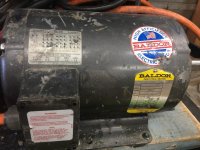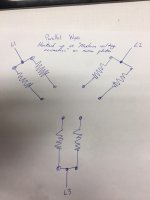Brian Campbell
Plastic
- Joined
- Dec 14, 2021
Hello
The power supply I have coming in is two legs of a three phase system, two phases 120 degrees apart. This system is unheard of in usa but is what we have in New Zealand on some rural properties (Australia also)
Im just wanting to get peoples opinions on using a double wye wound motor with the star points connected together as a rpc converter
I have all the parts now to build my rpc, im am using four smaller wye wound motors with a staggered start between them.
The wye wound motors will self start with there star points connected to neutral.
Im just wanting to check if the baldoor motor pictured can be wired up to be self starting also with the star points connected to neutral. Some people have commented if the two sets of windings aren't wound exactly the same it could be a problem.



The power supply I have coming in is two legs of a three phase system, two phases 120 degrees apart. This system is unheard of in usa but is what we have in New Zealand on some rural properties (Australia also)
Im just wanting to get peoples opinions on using a double wye wound motor with the star points connected together as a rpc converter
I have all the parts now to build my rpc, im am using four smaller wye wound motors with a staggered start between them.
The wye wound motors will self start with there star points connected to neutral.
Im just wanting to check if the baldoor motor pictured can be wired up to be self starting also with the star points connected to neutral. Some people have commented if the two sets of windings aren't wound exactly the same it could be a problem.






